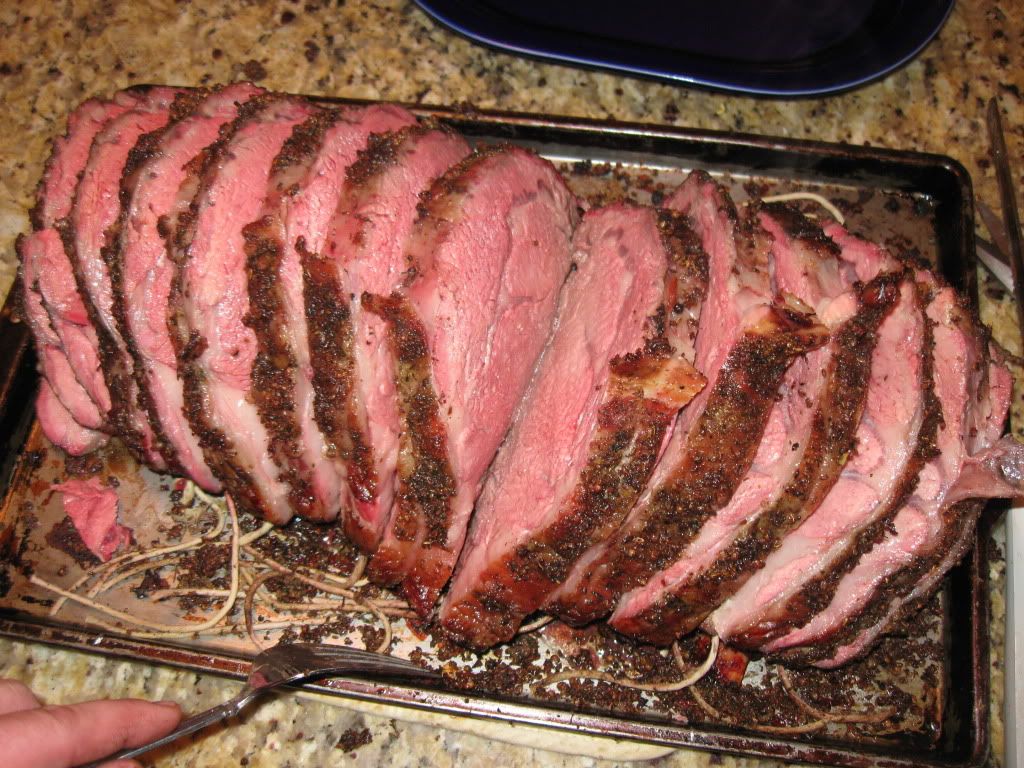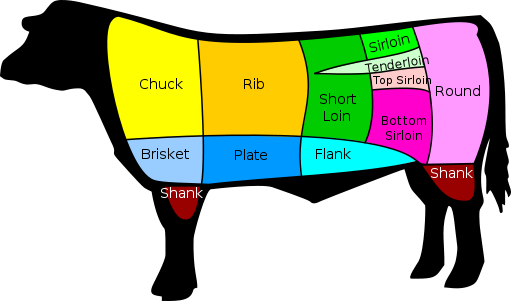dave, that looks fantastic! The montreal recipe works well for my family as one of my kids prefers well done while the rest of us like medium rare. Actually, one of my jobs working my way through college was waiting tables at a top steak house. Saturday night was prime rib (!) night for the staff and I noticed a couple of the old-timers always asked for a rib end. I decided to try it and while well-done, it was beautifully marbled, full of spice and caramelized fat. The well-done ends of this recipe bring to mind those delicious rib-ends.
I don't know much about the difference between cuts, I just bought whatever was out for the $5.99/lb sale at our local supermarket.
Jeff, it's all good. Notice that I didn't say that the method was "wrong", just that I preferred the low and slow approach. To each their own and all that stuff. As for end cuts, I love them as well. Basically, you get a lot more of the seasoning as the entire surface of one side will be coated.
When I do a PR, for those that want theirs more well done, I'll put their slices in a bath of warm au jus to bring it to a higher temp.
As for the cuts, most whole ribeyes that you'll find in the supermarket have two main muscles. The longissimus dorsi and the spinalis dorsi. The longissimus is the "eye" of the ribeye and the spinalis is the cap of the ribeye.
The whole ribeye comes from the rib primal. In front of it is the chuck primal and behind it is the short loin primal, which is where the NY Strip comes from.
The large end of the whole ribeye sits right next to the chuck, while the small end sits right next to the short loin. The spinalis dorsi changes in size as you move from one end of the whole ribeye to the other. So, when you cut a whole ribeye, there will be variation between each steak as to how much of the spinalis dorsi is present.
A ribeye cut from the "small end" or "first cut" might look like this:
Notice that it has just a thin little sliver of the spinalis dorsi on the top left
A ribeye cut from the "large end" or "second cut" of the same ribeye roast might look like this:
Roughly 1/3'rd of that ribeye is the spinalis dorsi.
Which one you should look for depends on personal tastes. When "ribeye roasts" are on sale for $5.99 or whatever, generally you can choose which end of the ribeye the roast is from. You can do this either by looking at ones that are already wrapped and on trays and choosing yourself, or by talking to the butcher and telling him what you want. IF he doesn't understand "first cut" and "second cut", then ask if "small end / large end" makes sense for him. If that doesn't work, tell him you want the end closest to the chuck (large end) or closest to the short loin / NY Strip (small end). If that doesn't work, find someone else to ask







